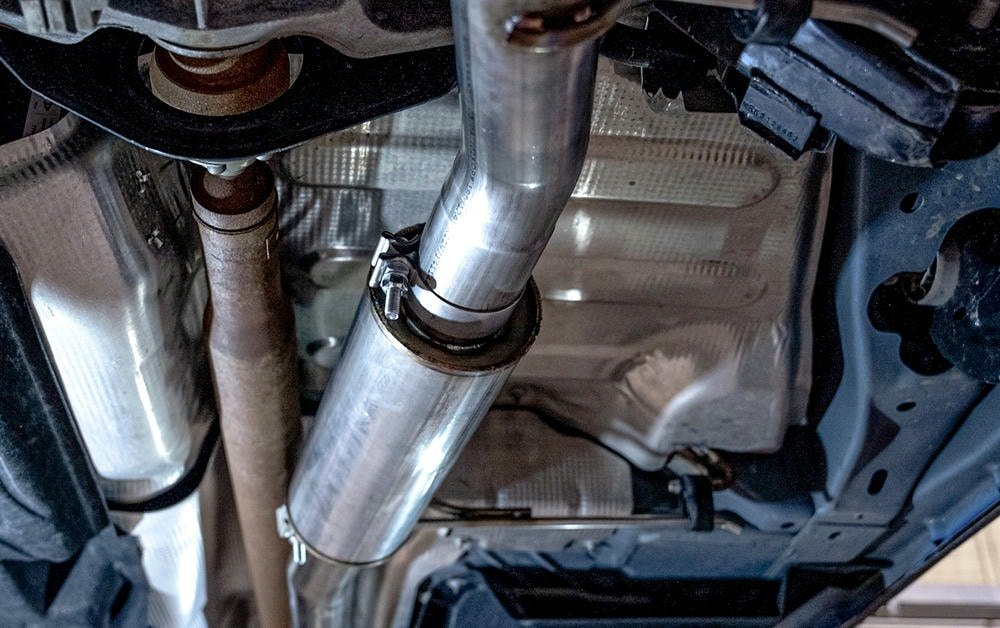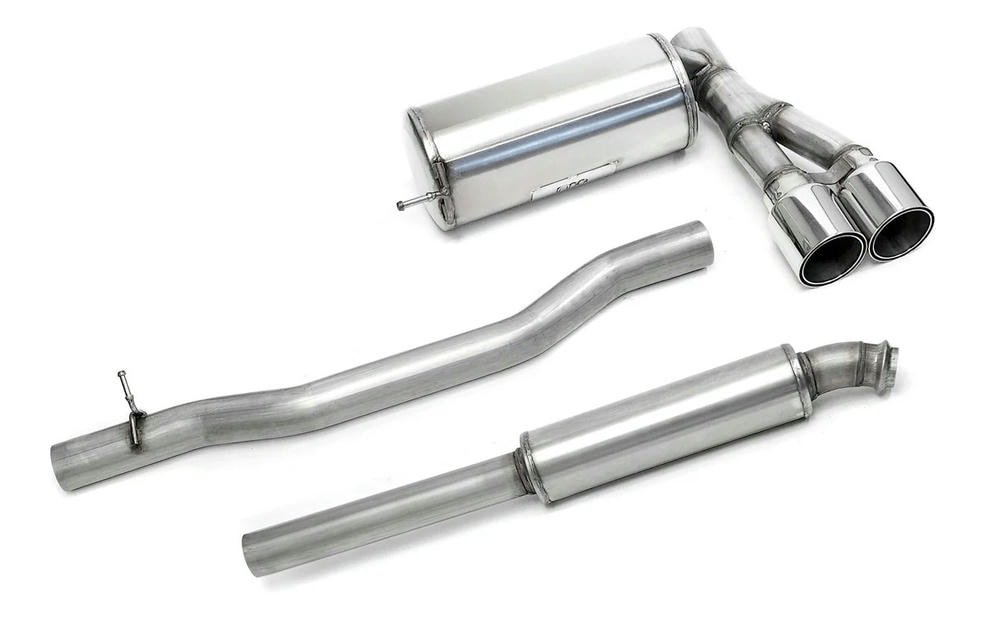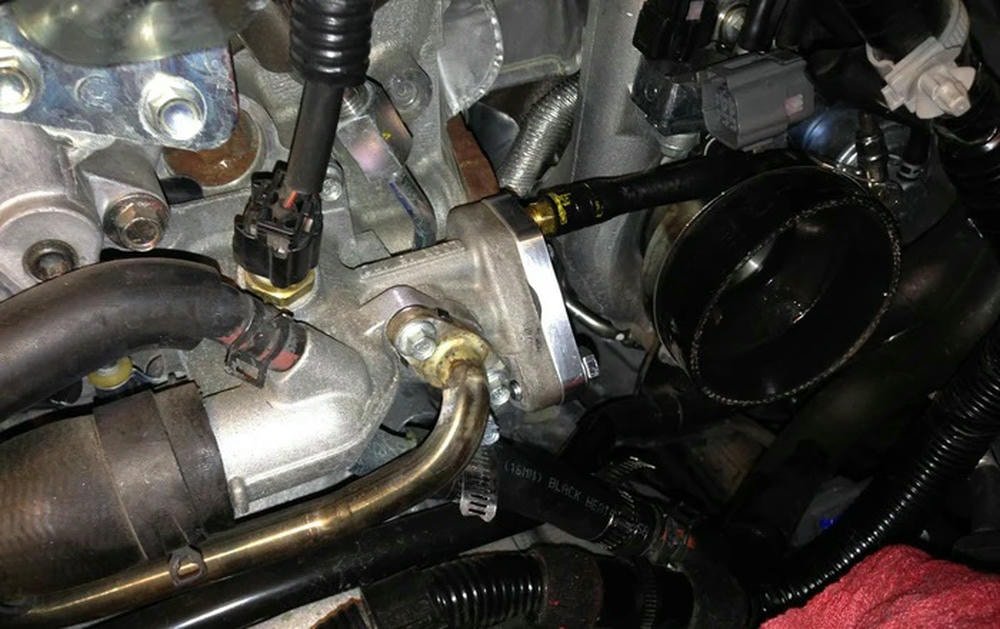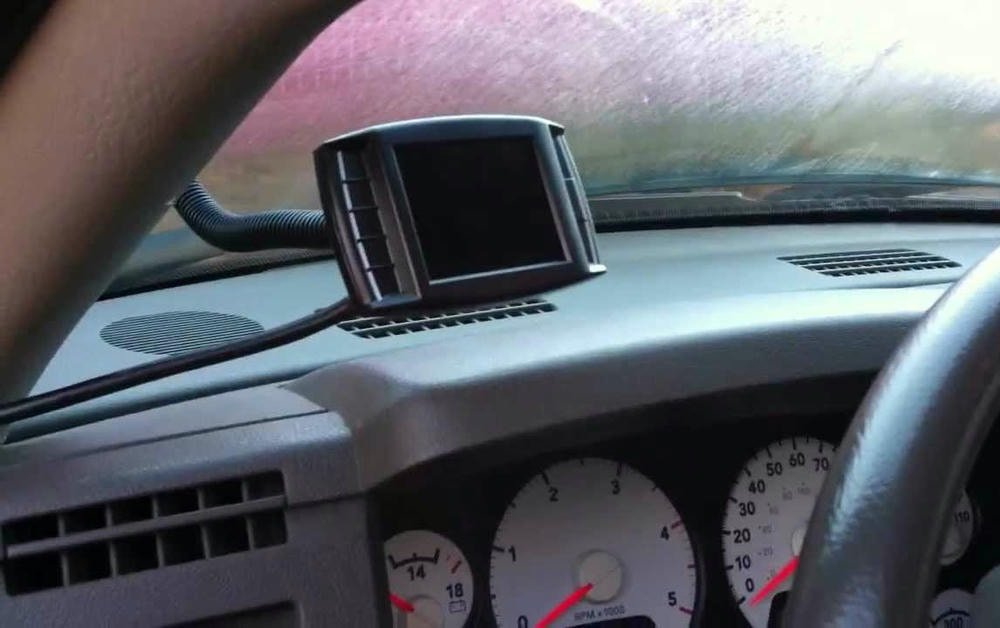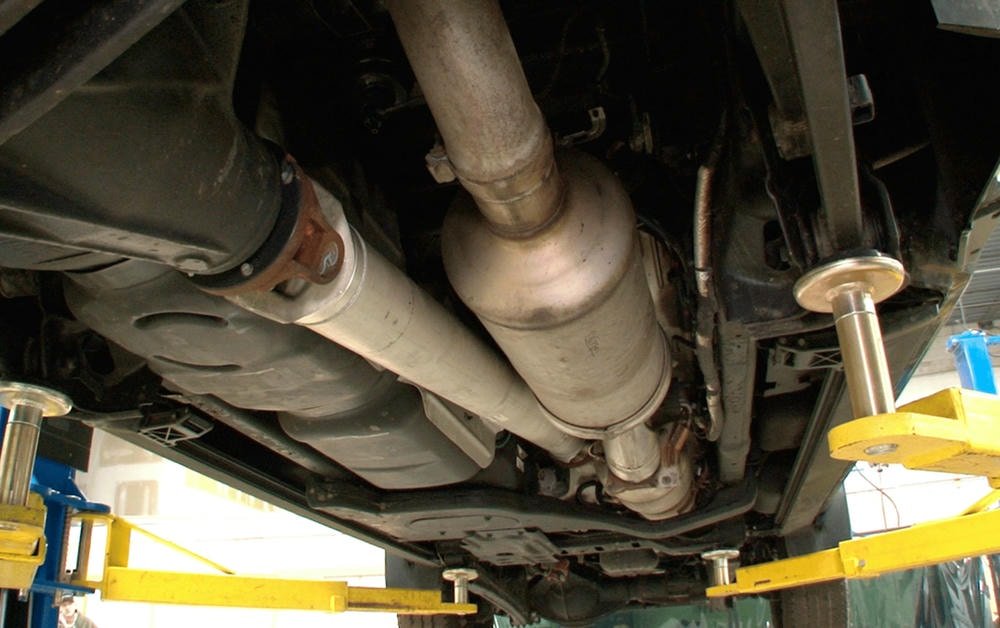Mufflers and delete pipes are key parts of a diesel truck’s exhaust system. They help control noise and manage emissions. But these parts can have problems like leaks, rust, and fitting issues.
Fixing leaks makes trucks run better. Using high-temp putty to seal them or replacing bad parts works well. Loud noises from delete pipes may upset neighbors or break laws. It’s good to keep the sound cool but legal.
Following emission rules is a must when changing your exhaust setup. Regular checks can stop big issues later, such as finding loose bits before they fall off.
Using top-notch parts means less trouble in the future because they last longer and work better. This article shares tips on tackling common muffler and delete pipe challenges, fixing them right, and avoiding issues down the road by choosing quality over cheap every time.
Get ready for some solid advice!
Table des matières
ToggleCommon Muffler Issues
Mufflers go through a lot, facing heat, dirt, and water every day. This can lead to problems like holes from rust or parts shaking loose. With tools like sealants for leaks and replacements for worn-out bits, fixing these issues keeps trucks running smooth and sounding right.
Fuites d'échappement
Exhaust leaks can be a real pain for diesel truck owners. They kill your rig’s efficiency and mess with the engine tuning. Most times, these sneaky leaks start at rusty spots or where parts join together.
Spotting them early saves a ton of trouble later.
A quiet exhaust is a happy one; listen for whispers of trouble.
Fixing muffler and delete pipe issues means getting down to spot where that hissing noise comes from. A simple smoke test or feeling around with your hand (careful, it might be hot!) can point you right to the problem area.
Then, sealing up those leaks brings back peace of mind and keeps your rig running smooth – emission control back on track, just like that!
Rust and Corrosion
Rust and corrosion are big enemies for your diesel truck’s muffler and système d'échappement. Over time, moisture and chemicals on the road eat away at metal parts. This can lead to holes and weak spots in the muffler.
If left unchecked, it might even cause dangerous exhaust leaks. To prevent this headache, regular checks are crucial. Look for any signs of rust or damage, especially after winter months when roads are covered in salt.
Fixing rust-related issues early saves money and keeps your truck running smoothly. For small spots, a bit of sanding followed by high-temperature paint may do the trick. But sometimes, you’re looking at replacing sections of your muffler or exhaust pipes to dodge bigger problems down the road.
Using quality components is key here; they resist rust better and last longer. Also, consider stainless steel options if you live in areas with lots of snow and rain—they’re champs against corrosion.
Loose or Damaged Components
Rattles, hums, and weird noises often point to loose or damaged parts in your diesel truck’s exhaust system. From the muffler to delete pipe, these issues can mess with your ride’s vibe and performance.
A common culprit? Vibrations from daily drives loosening bolts and brackets or even causing cracks. Checking connections like clamps, hangers, and welds yourself can save a pretty penny.
One diesel owner found a sneaky leak caused by a cracked weld on their muffler. A simple visual inspection spotted the issue before it turned into a bigger headache (and hit to the wallet).
Tightening up those loose bits and patching up damage keeps that power stroke moteur diesel running smooth—and keeps you out of the repair shop more than you need to be.
Common Delete Pipe Issues
Elimination tubes, typically seen in diesel trucks for optimal exhaust flow improvement, may encounter a unique set of difficulties. From disturbing the neighborhood with loud noises to conflicting with emission regulations, these problems necessitate consideration.
This section explores typical elimination tube problems such as excessive noise and improper fitting. It also discusses maintaining your truck’s legality while enhancing its effectiveness.
Excessive Noise Complaints
Loud delete pipes on diesel trucks can cause headaches in the neighborhood. Many owners love the deep roar, but not everyone shares that joy. Noise levels from modified exhausts often exceed local laws, leading to complaints and fines.
Owners solve this with a balance between sound enhancement and staying legal. They troubleshoot delete pipe leaks to reduce unwanted noise. Some even switch back to quieter systems or add mufflers designed for performance without excessive volume.
It’s all about finding that sweet spot where your truck sounds great but keeps the peace too.
A loud truck is fun until it’s not.
Emissions Compliance Problems
Emissions rules for diesel trucks can be a headache. These laws make sure trucks don’t put too much bad stuff into the air. A delete pipe might mess with these rules because it changes how exhaust leaves the truck.
If a truck owner isn’t careful, they could get fines or even have to take their truck off the road.
Some folks have faced these problems after trying to improve their truck’s performance. They replaced parts of their système d'échappement without thinking about emissions. Later, they had to fix those changes to avoid trouble.
It’s key to know your local laws before making any changes and consider using high-quality components that meet emission standards. This way, you keep your diesel running well without breaking any rules.
Fitment and Installation Challenges
Getting delete pipes and mufflers to fit right can be tough. Sometimes, they don’t match up with your diesel truck as you hoped. This mismatch causes headaches. You’ve got a pipe that’s supposed to boost performance but instead, it just won’t sit right.
Tools like clamps and welding equipment are key here. They help make adjustments so everything lines up.
Troubleshooting these challenges needs patience. It’s about checking each connection point carefully. You look at where the exhaust meets the manifold or how the delete pipe aligns under your truck.
Small tweaks here can mean big improvements in exhaust flow optimization and overall performance. Use des composants de haute qualité too; they’re more likely to fit better from the start, cutting down on installation drama.
Dépannage et résolution des problèmes
Addressing your muffler or delete pipe challenges need not be a complicated task. With the appropriate method, identifying and repairing leaks, fixing damaged components, assuring everything fits correctly, and managing legal matters simplifies.
Proceed to understand how to maintain your vehicle in a smooth and sound condition.
Identifier et colmater les fuites
Leaks in your système d'échappement can hurt your diesel truck’s performance. Finding and fixing these leaks is a must-do for any moteur diesel maintenance routine. Here’s how to troubleshoot delete pipe leaks et prevent exhaust leaks effectively:
- Listen for hissing or popping sounds – These noises often indicate a leak. During a cold start, stand behind your truck and listen closely. The first hints of trouble might come from the sound.
- Vérifier si visual signs – Look for black soot around the muffler and delete pipe area. This soot can show where gases are escaping.
- Feel for air leaks – With the engine running (and parked safely), use your hand to feel around the système d'échappement components. Be careful; it gets hot. If you find a spot where you can feel air blowing out, that’s likely where your leak is.
- Use soap and water – Spray a soap-water solution on the exhaust while the engine is running. Bubbles form at the leak points, showing exactly where attention is needed.
- Inspect gaskets and seals – Often, leaks happen at connection points where gaskets or seals have failed. A close look here can save lots of guessing.
- Tighten clamps and bolts – Sometimes, a simple tightening job can solve the issue if parts have loosened over time.
- Consider professional smoke tests – Shops use smoke machines to push smoke through the système d'échappement, making leaks easy to spot.
- Seal small holes with epoxy putty – For minor pinhole leaks in accessible areas, high-temperature metal repair paste can patch things up temporarily until permanent repairs are made.
- Replace damaged sections – If a section of your pipe or muffler is beyond repair, replacing it may be your best bet for sealing off those pesky leaks for good.
- Ensure proper alignment during installation – Misalignment can cause stress points that lead to future leaks; make sure everything fits just right.
Using these steps, I once found a tricky leak in my own truck’s system that was killing my fuel efficiency and power output—fixed it with some new clamps and sealant, and she was good as new!
Réparation ou remplacement des sections endommagées
Fixing or swapping out busted parts of a muffler and delete pipe can seem like a puzzle. But for diesel truck owners, it’s all in a day’s work. Here are the steps to get your exhaust humming again:
- Spot the trouble area. Use your eyes and ears. Look for rust, holes, or parts that hang too loose. Listen for strange noises when the engine runs.
- Take off the damaged piece. You might need some tools like wrenches and screwdrivers. Sometimes, these parts are stubborn.
- Clean the spot where you’ll put the new part. Get rid of dirt, rust, or any gunk so your new piece fits perfect.
- Measure twice, cut once! Make sure your new section is the right size before you install it.
- Welding might be needed to fix the new part in place firmly; if not experienced, seeking help from a pro is wise.
- Bolt everything tight but not too tight! Over-tightening can cause threads to strip.
- Seal all connections well to stop fuites d'échappement—use high-temperature sealant designed for vehicle systèmes d'échappement.
- Double-check alignment; make sure nothing touches parts it shouldn’t, like the body of the truck or moving parts under there.
- Start up your engine and listen carefully again for any odd sounds to ensure everything is snug and correctly fitted.
10.Taking care of this repair soon means less noise on the road and staying on top of emissions rules which keeps everyone happy including ‘Mother Nature’.
Ajustement de l'ajustement et de l'alignement
Getting the adaptation et alignement right on your diesel truck’s système d'échappement is key. It ensures everything runs smoothly and keeps your ride compliant with emissions standards. Here’s a hands-on list to guide you through adjusting fitment and alignment, straight from the garage floor.
- Commencez par un visual check. Look for any signs that parts of the exhaust are not lined up correctly.
- Get your truck on a lift or stands for better access underneath.
- Loosen the clamps connecting different sections of the système d'échappement but don’t remove them fully yet.
- Vérifier le hangers. These are what hold your exhaust in place under the truck. Make sure they’re not bent or broken.
- Adjust each section of piping by twisting or pushing until they align properly. This might require some muscle.
- Utiliser un outil de niveau to ensure pipes run straight, not tilting up or down.
- Once everything lines up, tighten the clamps back down firmly but avoid over-tightening which can bend the pipes.
- For trucks with a delete pipe installed, double-check local laws about emissions before finalizing any adjustments to ensure compliance.
- After adjustments, do another thorough visual inspection to confirm all parts are secure and aligned.
- Test drive your truck to listen for any unusual noises which could indicate loose parts needing more adjustment.
Each step here comes from real work with diesel trucks, aiming at solving common issues diesel truck owners face with muffler repair and performance exhaust care—keeping that charger running smooth and clean!
Addressing Legal and Compliance Issues
Navigating legal and compliance issues can be a daunting task for diesel truck owners. Believe it or not, having a clear understanding of the rules can greatly mitigate potential issues. Here is a meticulously tailored list of steps to help you stay on the right side of the law:
- Before embarking on any modifications to your muffler or installing a delete pipe, it’s not merely advisable, but crucial to familiarize yourself with local laws. These can differ significantly from state to state and even city to city.
- When it comes to emissions standards, knowledge is key. Federal and state regulations determine the acceptable limits for vehicle emissions.
- For those navigating the complexities of California laws, using CARB-approved components for replacements or upgrades is a must.
- Maintain meticulous documentation of all modifications and maintenance operations. This could aid in proving compliance when needed.
- Regular emissions inspections, particularly following modifications, are crucial to ensure legal requirements are met.
- Noise ordinances should be considered when choosing a delete pipe or aftermarket muffler to prevent complaints about excessive noise.
- In an era of traveling, remember that different states may have unique rules regarding exhaust systems.
- For DIY enthusiasts, it is advisable to cross-verify installation guidelines with current laws to avoid any future complications.
- Replacing damaged sections with high-quality components not only ensures extended lifespan but also eliminates potential emissions problems.
- Finally, seeking more than just basic information? Contact a professional to unlock the secrets of specific legal and compliance-related queries regarding your exhaust system.
Prévenir les problèmes futurs
Keeping your diesel truck’s exhaust system in top shape means fewer headaches down the road. Stick to a schedule for checking things out and swapping any worn-out parts for tough, long-lasting ones – this way, you make sure everything fits right and meets the rules from day one.
Regular Inspections and Maintenance
Keeping your diesel truck’s muffler and delete pipe in top shape is crucial. Regular inspections and maintenance can prevent exhaust leaks and ensure everything runs smoothly. Here’s how to stay on top of things:
- Vérifier si rust and corrosion: These are big enemies of exhaust systems. Look over the muffler and delete pipe for any signs of wear. Catching rust early can save you big bucks down the line.
- Listen for strange noises: If your truck starts sounding like a rock concert, it might be time to check the exhaust system. Unusual sounds often point to leaks or damage.
- Test for exhaust leaks: This is key in preventing performance issues. You can do a simple visual check or use a specialized tool, like a smoke machine, to find leaks you can’t see.
- Inspect hangers and mounts: These parts keep your exhaust system in place. If they’re loose or broken, your muffler or delete pipe might not be aligned right, which can cause problems.
- Look at the seals and gaskets: These small parts play a big role in preventing leaks. They can wear out over time, so replace them if they look damaged.
- Make sure everything’s tight: Bolts and clamps can loosen with vibrations from driving. Tighten anything that seems loose to avoid parts falling off or leaking.
- Clean your components: Dirt and grime build-up can lead to corrosion over time. A clean exhaust system is a happy one – just make sure it’s cool before you start scrubbing!
- Visit a professional: Sometimes it’s best to get an expert opinion. A yearly checkup at your local mechanic can catch issues you might miss.
9 Use des remplacements de haute qualité: If something needs replacing, go for quality parts that will last longer and perform better.
10 Follow installation guidelines closely if adding new components yourself ensures everything fits perfectly and works as it should.
Staying ahead with these steps will help keep your diesel truck running quietly and efficiently while avoiding bigger issues down the road.
Using High-Quality Components
Superior components enhance the performance and longevity of your truck’s exhaust system. This is akin to preferring a robust lock over a less reliable one for your front entrance, granting you confidence in its lasting durability.
Premium maintenance of mufflers and delete pipes minimizes the incidence of leaks and rust. An experienced individual will confirm that initial investments in quality curtail future expenses on repairs.
Spend once on quality, or keep paying for fixes.
Implementing premium-grade steel in pipes or high-quality gaskets successfully deter the onset of fuites d'échappement. This strategy draws a line between hassle-free cruising and intermittent pauses to investigate an unusual sound.
Also, this measure wards off prevalent pitfalls such as corrosion, ensuring a seamless and quiet journey. Listen to experienced advice: economizing now leads to increased future outlays on exhaust system troubleshooting.
Assurer une installation correcte
Getting your muffler and delete pipe set up right takes a bit of know-how. You want to avoid fuites d'échappement and make sure everything fits like it should. Start by making sure you’re using parts that match your truck’s specs.
It’s all about the fit – get this wrong, and you’re asking for trouble.
A common pitfall is skimping on quality for a lower price tag. Cheap parts often mean more problems down the road. Investing in high-quality components pays off by reducing future maintenance headaches.
Also, don’t just wing it; use outils appropriés and follow the manufacturer’s instructions closely. If you’ve never done this before, consider watching some tutorials or asking someone with experience for help.
Hands-on learning can make a big difference in getting it right the first time.
Conclusion
Introduce Jack Taylor. He’s a prominent figure in diesel engines and has years of experience repairing trucks similar to yours. From an early age, Jack was fascinated with motors, earning him several degrees and awards for his clever solutions to difficult issues.
He possesses extensive knowledge about mufflers and delete pipes.
Jack addresses common muffler problems such as leaks and rust, stating that they are not only inconvenient but can also affect your truck’s efficiency and cleanliness. Regarding delete pipes, Jack emphasizes that while they may enhance your ride’s sound, you need to consider noise levels and legal requirements.
“Prioritize safety,” Jack professes. Repairing exhaust systems involves serious materials that could pose risks to you or the environment if mishandled. He stands firm on using components that comply with safety regulations and remain transparent with emission laws.
For everyday commuting or professional use, Jack recommends routine inspections to identify issues promptly. Utilize high-quality parts for repairs to prevent redundant work.
Jack considers both sides impartially. Indeed, resolving these problems enhances performance, but potential drawbacks such as expense or conflict with local noise regulations shouldn’t be overlooked.
His concluding advice? Addressing muffler and delete pipe challenges is a worthwhile endeavor for diesel truck owners striving to maintain smooth operation without violating laws or community standards.
FAQ
What’s the deal with muffler and delete pipe maintenance?
Muffler and delete pipe maintenance is crucial for preventing exhaust leaks. It involves regular checks, cleaning, and repairs to keep your exhaust systems running smoothly.
How can I prevent exhaust leaks in my vehicle?
Preventing exhaust leaks starts with proper muffler and delete pipe care. Regular inspections for signs of damage or wear, timely replacements when needed, and adhering to a solid maintenance guide are all key steps.
What should I do if I have problems with my exhaust system?
Troubleshooting your systèmes d'échappement begins by identifying any unusual noises or performance issues. From there, you’ll need to inspect the muffler and delete pipes for possible causes like rust or holes.
Can a good maintenance guide help me solve muffler & delete pipe issues?
Absolutely! A well-structured muffler and delete pipe maintenance guide will offer step-by-step advice on how to handle common issues related to your vehicle’s exhaust system.


